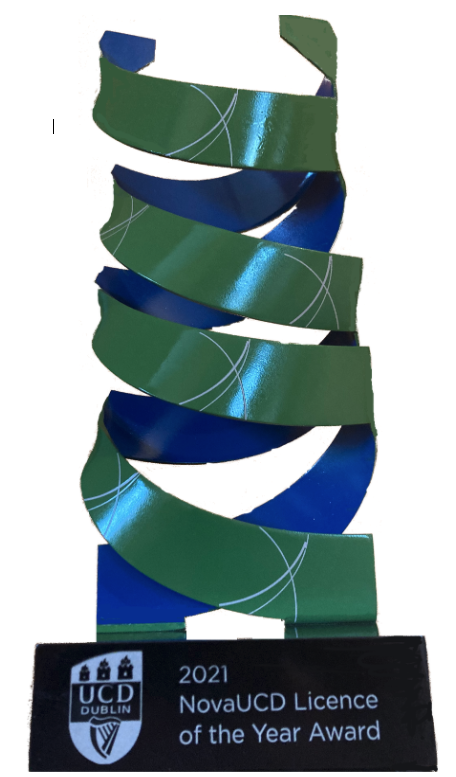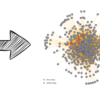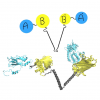Abstract
The transformation of a beautiful idea born via simulation into a commercial opportunity is recognised as a disruptive technology. At the heart of this ongoing story is advanced simulation using massively parallel computation, rare-event methods and genetic engineering.
Proof of concept : recognition as a disruptive technology
Author: Donal Makernan, University College Dublin, Ireland

Last week I received an email asking if I would be willing to accept the ‘2021 NovaUCD Licence of the Year Award’ for the licence of the disruptive molecular switch platform technology to a US based company with an initial application as a point-of-care medical diagnostic for COVID-19 and influenza. Of course I said yes, and since then received a beautiful statue of a metal helix mounted on a black marble plinth via courier (displayed on the right). It is nice that our work gets this sort of recognition given all of the effort it has taken to get to this point. In my last blog post I wrote of the first steps towards commercialization of our technology. Since then, everything has intensified. The company funding this research collaboration with University College Dublin has now over 20 people in the USA dedicated to its commercialization – including old hands hired from well known immuno-diagnostic and pharmaceutical companies, medical doctors, engineers and sales-persons. On our side, our team has grown and now includes two software-engineers/simulators trained in part through E-CAM while they were studying theoretical physics, and four molecular biologists. In addition, contract research and manufacturing organizations are also now being engaged so as to be ready for clinical testing and scale-up when we have fully optimized our diagnostic sensors for COVID 19. Hard to believe it is only one year since we met the key commercial people. We continue to simulate various forms of the sensor so as to optimize its performance and commercialization, and for that HPC resources from PRACE partners from Ireland (ICHEC), Switzerland (CSCS) and Italy (Cineca) have been of huge help. We also are dedicating a lot of effort in software development so as to speed up our ability to estimate free energy properties such as binding affinities, which turn out to be much tricker than one might expect when proteins are very large, such as between antibodies and target antigens such as the COVID 19 spike protein. That methodology and software arose from an E-CAM pilot project – and would appear to have a potential utility way beyond our first expectations. The E-CAM Centre of Excellence grant from the EU will be finished soon (31st March). Hopefully it will emerge soon again.


